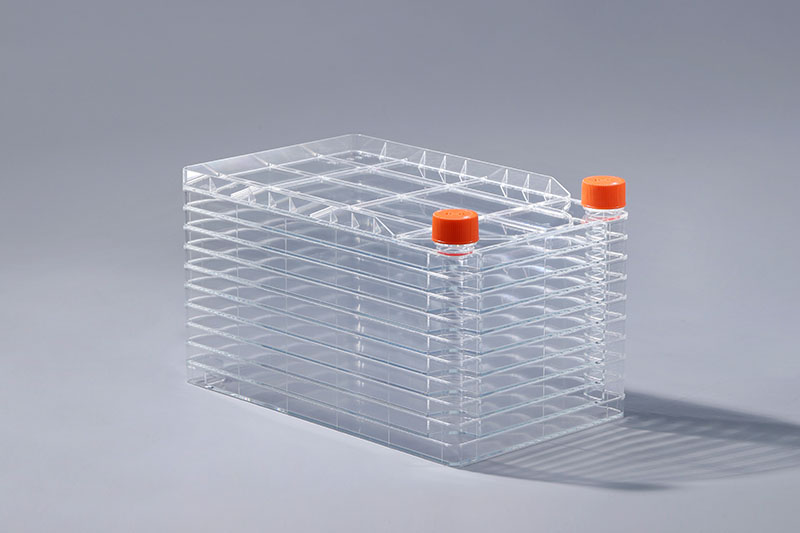ir šūnu kultūras palīgmateriāls, kas izgatavots no polistirola (PS) izejvielām. Tas pieņem daudzslāņu struktūras dizainu. Kopējās specifikācijas ietver 1 slāni, 2 slāņus, 5 slāņus, 10 slāņus un 40 slāņus. Pielāgojiet slāņu skaitu pēc vajadzības. Tātad, kāds ražošanas process tiek izmantots šai īpašajai palīgmateriālu struktūrai?Šūnu rūpnīcā izmantotais iesmidzināšanas formēšanas process galvenokārt ietver šādas darbības:cell factory
1. Pirmsformēšanas process:
Pirmsformēšanas process ir tāds, ka plastmasas materiāls tiek karsēts, transportēts, sablīvēts, griezts, sajaukts un homogenizēts mucā, lai pārveidotu materiālu no stikla stāvokļa viskozā šķidrā stāvoklī, lai atbilst iesmidzināšanas formēšanas prasībām.
2. Iesmidzināšanas formēšanas process:
Iesmidzināšanas iepildīšanas stadijā skrūve iesmidzina uzglabāšanas kamerā esošo kausējumu dobumā caur sprauslu, veidnes vadu un vārtiem zem iesmidzināšanas cilindra vilces.
3. Saspiešanas un saspiešanas process:
Turpiniet iesmidzināšanu, lai aizpildītu tilpumu, ko daļa atbrīvojusi saraušanās dēļ.
4. Dzesēšanas un iestatīšanas process:
Pēc turēšanas spiediena beigām vārti ir sasaluši. Rakstam tiek veikts dzesēšanas un iestatīšanas periods.
5. Izstumšanas savākšanas process:
Pēc tam, kad produkts ir kādu laiku atdzesēts, tam ir noteikta stingrība un izturība. Detaļa tiek izstumta no iesmidzināšanas veidnes ar veidnes ežektora tapu.
Pēc tam, kad šūnu rūpnīcas ražošana ir pabeigta, katrs slānis ir jāsamontē, un tad to var atstāt no rūpnīcas tikai pēc dažādiem testiem, piemēram, hermētiskuma. un sterilitāte. Lai nodrošinātu, ka šūnas var labāk pieķerties, šī palīgmateriāla virsma ir jāapstrādā ar TC, lai ieviestu hidrofilus faktorus.
After the production of the cell factory is completed, each layer needs to be assembled, and then it can only leave the factory after various tests such as tightness and sterility. In order to ensure that cells can adhere better, this consumable also needs to be treated with TC on the surface to introduce hydrophilic factors.
The FAI climbed 5.9 percent year-on-year in the first 11 months of 2018, quickening from the 5.7-percent growth in Jan-Oct, the National Bureau of Statistics (NBS) said Friday in an online statement.
The key indicator of investment, dubbed a major growth driver, hit the bottom in August and has since started to rebound steadily.
In the face of emerging economic challenges home and abroad, China has stepped up efforts to stabilize investment, in particular rolling out measures to motivate private investors and channel funds into infrastructure.
Friday's data showed private investment, accounting for more than 60 percent of the total FAI, expanded by a brisk 8.7 percent.
NBS spokesperson Mao Shengyong said funds into weak economic links registered rapid increases as investment in environmental protection and agriculture jumped 42 percent and 12.5 percent respectively, much faster than the average.
In breakdown, investment in high-tech and equipment manufacturing remained vigorous with 16.1-percent and 11.6-percent increases respectively in the first 11 months. Infrastructure investment gained 3.7 percent, staying flat. Investment in property development rose 9.7 percent, also unchanged.
 English
English



















































